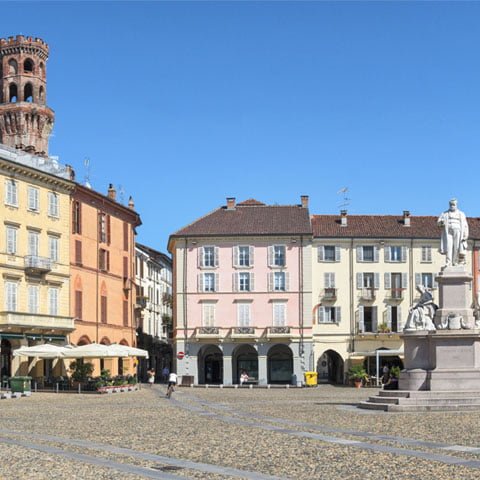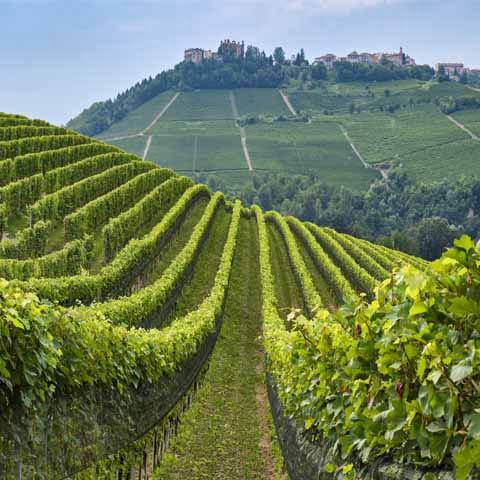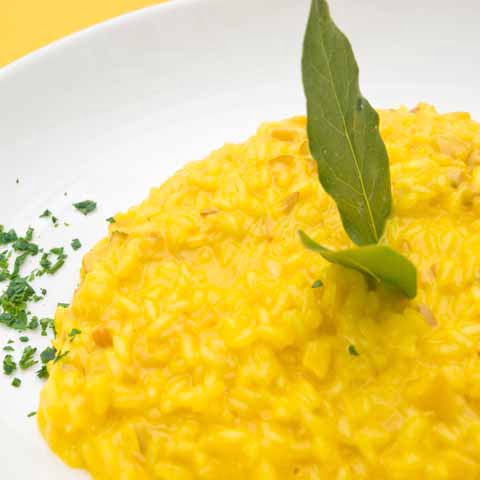Vercelli is a small town located in the Piemonte region of Northern Italy, better known by people outside of the country as the Piedmont region. It is located in the province of the same name between the cities of Milan and Turin, and situated on the banks of the Sesia River, which is a tributary of the Po River. The region is bordered on the west by France, to the northwest by Valle d’Aosta, to the north by Switzerland, to the east by Lombardy, and to the south by Liguria. Vercelli is notable for being one of the earliest inhabited urban sites in all of Northern Italy, with archaeologists and historians estimating that the town first appeared sometime around 600 BCE, as well as being the site of the very first publicly funded university back in 1228.
The oldest evidence of civilization in Vercelli seems to suggest that it was the capital city of a Ligurian tribe before being conquered by the Romans and made a Municipium of the empire. Vercelli was an important city to the empire for its fertility and its history of growing grapes and rice. It was also the site of numerous important battles, including the Battle of Vercellae in 101 BC, and the Roman defeat of the Goths roughly 500 years afterward. To this day, many historical Roman sites still dot the area, including a hippodrome, an amphitheater, and many notable tombs and inscriptions.
After the fall of Rome, the city fell into the hands of the Lombards and the Duchy of Ivrea, before eventually establishing itself as an independent town in the 1120s. Later, in the year 1228, the first ever publicly funded university was established in the city.
Like most cities in Italy, though, Vercelli would change hands numerous times, bouncing from ruler to ruler over the course of the thirteenth through fifteenth centuries, before being conquered by the French near the tail end of the fifteenth century. Then, again, the town was conquered by the Spanish in the seventeenth century, before finally adopting the constitution and joining what would ultimately become the Kingdom of Italy in 1821 after the Congress of Vienna in 1815.
Vercelli has a long history of agriculture. Since ancient times, people who have settled the region have grown rice and grapes for wine, and the city was prized in Roman times for its vineyards. In the present day, the region is famous for producing the red Italian wine known as Gattinara, which received DOCG classification in 1990.
Nowadays, Vercelli is home to numerous historically and culturally relevant sites that visitors can appreciate. Places to see include the Museo Francesco Borgogna, which contains numerous works of art ranging from between the thirteenth to the twentieth centuries, covering much of the Italian Renaissance with its collections of frescoes, paintings, sculptures, tapestries, and more. Also worth a look is the Vercelli Cathedral, known as the Duomo of Vercelli or the Cathedral of Sant’Eusebio, which is an excellent example of how architecture evolves over time due to its history of being built and rebuilt many times over the centuries, as well as containing a museum of its own. Lastly, worth a look is the Basilica of Sant’Andrea, which is one of the best-preserved Romanesque monuments in the country.
GEOGRAPHY & CLIMATE
Vercelli enjoys a temperate Mediterranean climate with warm springs and autumns, hot summers, and chilly, foggy winters. The hottest month of the year is July, with temperatures that approach 87 degrees Fahrenheit, while the coldest month is January, where temperatures tend to approach freezing. Vercelli lies in a valley that experiences heavy rainfall, with October being the rainiest month of the year. However, even the driest month, December, experiences a fair amount of rainfall.
The countryside surrounding Vercelli is varied and exciting. To the north lie the Italian Alps, which are perfect for skiing. Meanwhile, the Gattinara Hills are gently sloped and peaceable, covered in vineyards and forests and crisscrossed with rivers and valleys. Surrounding the city are also vast plains and rice paddies. The wide open, gently-hilled-to-flat landscape is excellent for long bike rides.
WHEN IN VERCELLI
When visiting Vercelli there are several sites that simply cannot be missed. Perhaps the most famous thing to see in Vercelli, as already mentioned above, is the Basilica of Sant’Andrea, or the Basilica of Saint Andrew. Often described as a stunningly unique example of early Gothic and Romanesque architecture, those interested in religious history or construction should make an endeavor not to miss this landmark. Visitors often describe the Basilica as elegant and unique, with a stone interior that allows a more in-depth look at the structure’s architectural style, and many delightfully unique works of art, such as the painted wooden statue of the Madonna near the altar. There is also a lovely garden filled with cedar trees, sequoias, and magnolias.
Those interested in religious history should also make an effort to visit the Vercelli Cathedral, also known as the Duomo of Vercelli or the Cathedral of Sant’Eusebio. This cathedral was originally built in the fifth century and was destroyed and rebuilt or otherwise restored multiple times over the centuries, making it an architectural amalgamation consisting of multiple styles that have been prevalent over the centuries. The Duomo also contains its own museum, called the Museo del Tesoro del Duomo di Vercelli, or the Museum of the Vercelli Cathedral Treasure. Here, many important religious artifacts and treasures are on display for the public to view, including the historic Vercelli Book, which is a tenth century manuscript of Old English poetry and prose.
Visitors to Vercelli who are interested in Jewish history might also want to visit the Vercelli Synagogue. The Synagogue was built in 1878 by Marco Treves, a famous Jewish architect who was born in Vercelli, and is an excellent example of Moorish Revival architecture. Services and tours are also open to the public. Meanwhile, those visiting Vercelli who are less interested in religious history might be more inclined to visit some of the ancient Roman sites, such as the Hippodrome or the Amphitheater, or the towers that dot the city such as the Torre di Città or the Torre dell’Angelo.
Finally, those visiting Vercelli who are interested in museums should be sure to make a visit to the Museo Francesco Borgogna. This museum contains numerous tapestries, paintings, frescoes, sculptures, drawings, prints, and other works of art, dating from the Italian Renaissance all the way to the present. Those who wish to view the drawings and prints, however, must book in advance as the pieces are as fragile as they are beautiful and are not always available for public viewing. The museum contains works by many famous Renaissance artists, such as Il Sodoma, who was a native to Vercelli, as well as Defendente Ferrari and Gaudenzio Ferrari, who, while not specifically from Vercelli, were native to the Piedmont region. Over 800 pieces are available for public viewing every day on the museum’s three different floors.
Located in the Piedmont region of Northern Italy off typical traveler routes, Vercelli is a true gem. From the Roman ruins to the Renaissance art and winemaking tradition, it is easy to fall in love with this historic city.
Travel Guides
The Piedmont Region of Italy
The Cities of Piedmont, Italy







